
Shift Pointers
- Subject: Changes in case electrical connectors
- Unit: GM 4L30-E
- Essential Reading: Rebuilder, Diagnostician, R & R
- Author: Wayne Colonna, ATSG, Transmission Digest Technical Editor
Because of the 4L30-E’s longevity (16 years now) and its use by a variety of vehicle manufacturers such as Isuzu, Honda, BMW and Cadillac, numerous changes have taken place in this transmission throughout those years.
One of those changes relates specifically to the design of the versions with dual case connectors. Originally in the 1990-and-later Isuzu Rodeo, the overdrive case contained a round connector and the main case housed a square connector (see Figure 1). The Honda Passport used this same design when it was released in 1994. But when the Cadillac Catera came out in mid-1997, its version of the transmission used the opposite case-connector configuration (see Figure 2). Three years later, in 2000, Isuzu and Honda switched to this design.
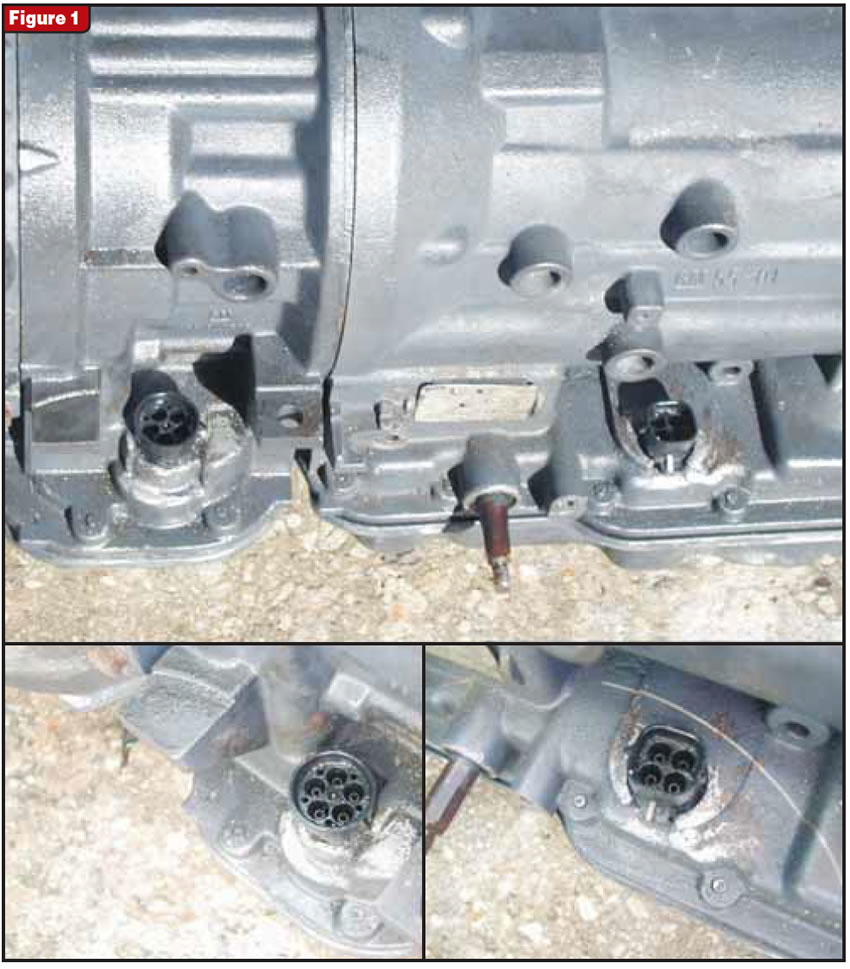
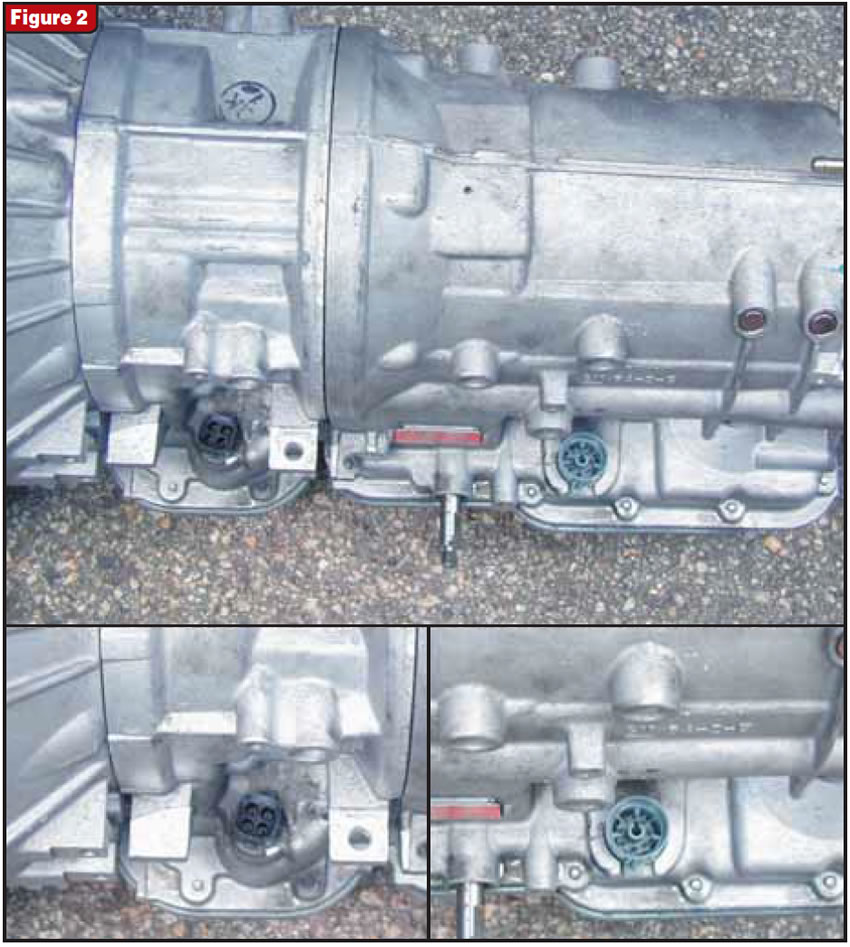
As you can see in Figure 3, the original round overdrive-case connector contained terminals for the TCC solenoid, the pressure-control solenoid and the transmission-fluid-temperature (TFT) sensor. The original square main-case connector contained terminals for the 1-2/3-4 shift solenoid, the 2-3 shift solenoid and the band-apply solenoid.
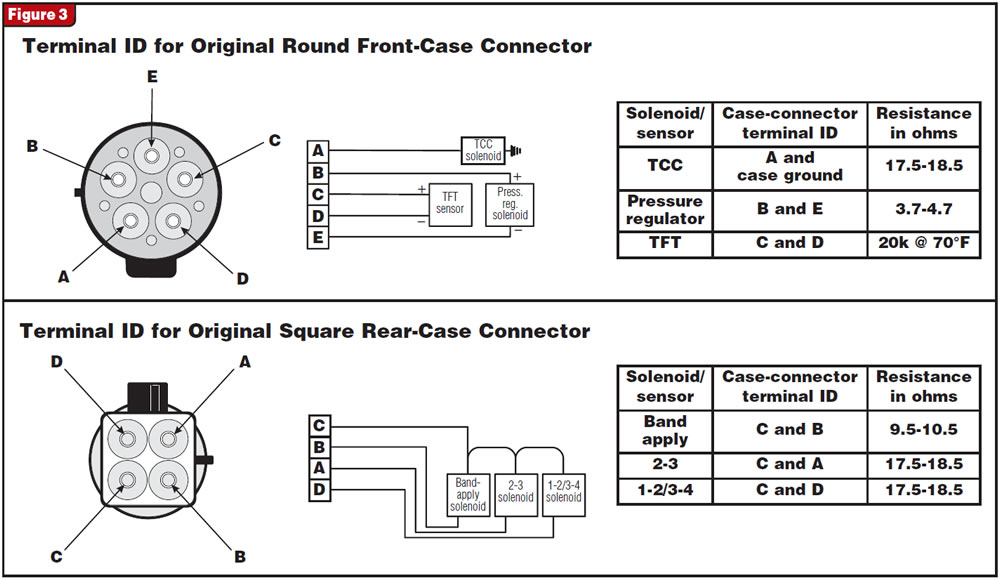
When the change took place, the TFT-sensor terminals were moved from the overdrive case to the main case (see Figure 4).
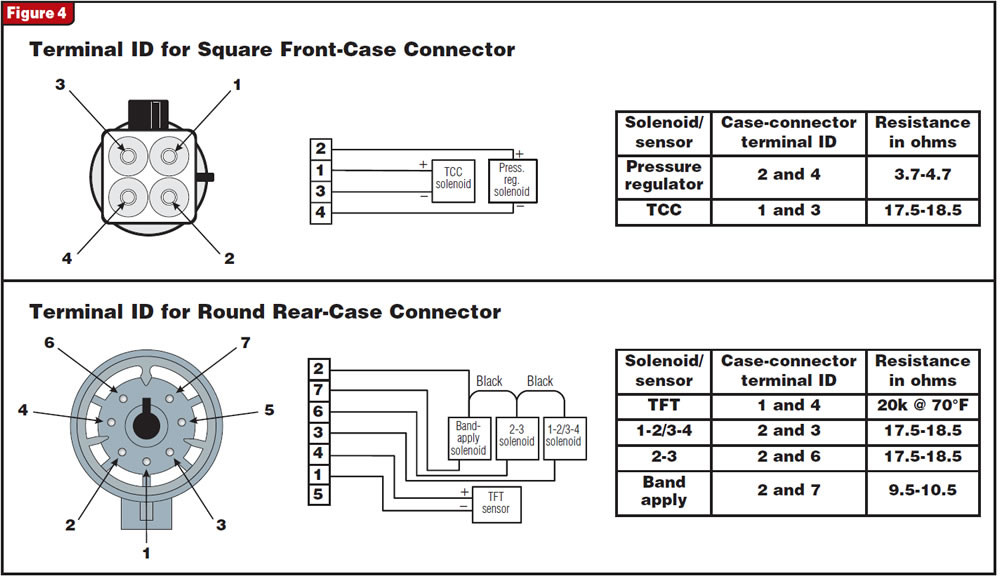
There have been several issues regarding these connectors and internal wiring, but one of the more-common problems ATSG has seen on its tech line has to do with the overdrive-case connector, both the early round and the later square design.
Figure 5 provides a rear view of the round case connector. Notice that one of the plastic legs used to hold the connector into the case has an integral locating tab for the proper placement of the internal wiring harness. These connector legs get brittle with age and snap off quite easily. When a connector has lost the leg with the locating tab, the internal harness can be plugged into the connector in any number of ways, causing codes for the TFT sensor, pressure-control solenoid and/or TCC solenoid, depending on the way in which the internal harness was incorrectly connected.
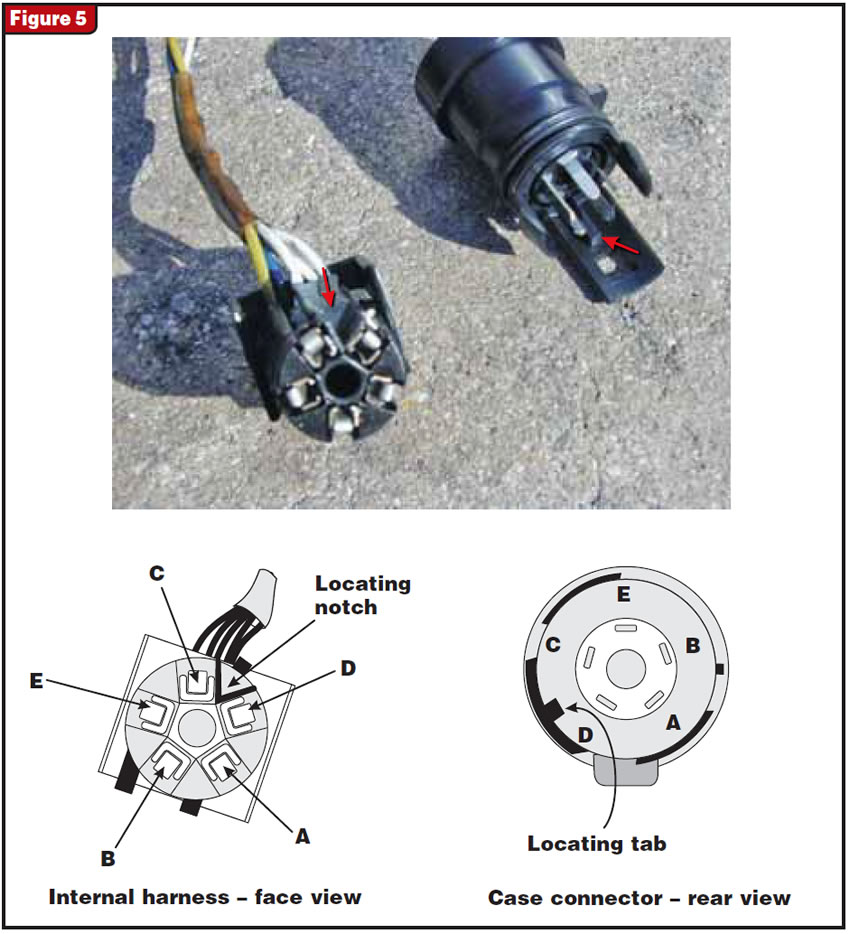
A similar misassembly can occur with the square front-case connector, but it will result in a slightly different complaint. Interesting enough, about the same time these connectors changed on Isuzu vehicles, that company added a reverse-block-out valve inside the center support. This was a safety feature allowing the computer to prevent a reverse engagement should it see forward movement during a reverse selection. To accomplish the task, the computer energizes the converter-clutch solenoid, sending oil pressure to stroke the lockout valve. The hydraulic schematics shown in Figure 6 illustrate a PWM configuration with Isuzu Troopers. You can see that TCC oil is sent to the lockout valve, which has no effect during forward TCC operation but will prevent reverse when reverse is selected.
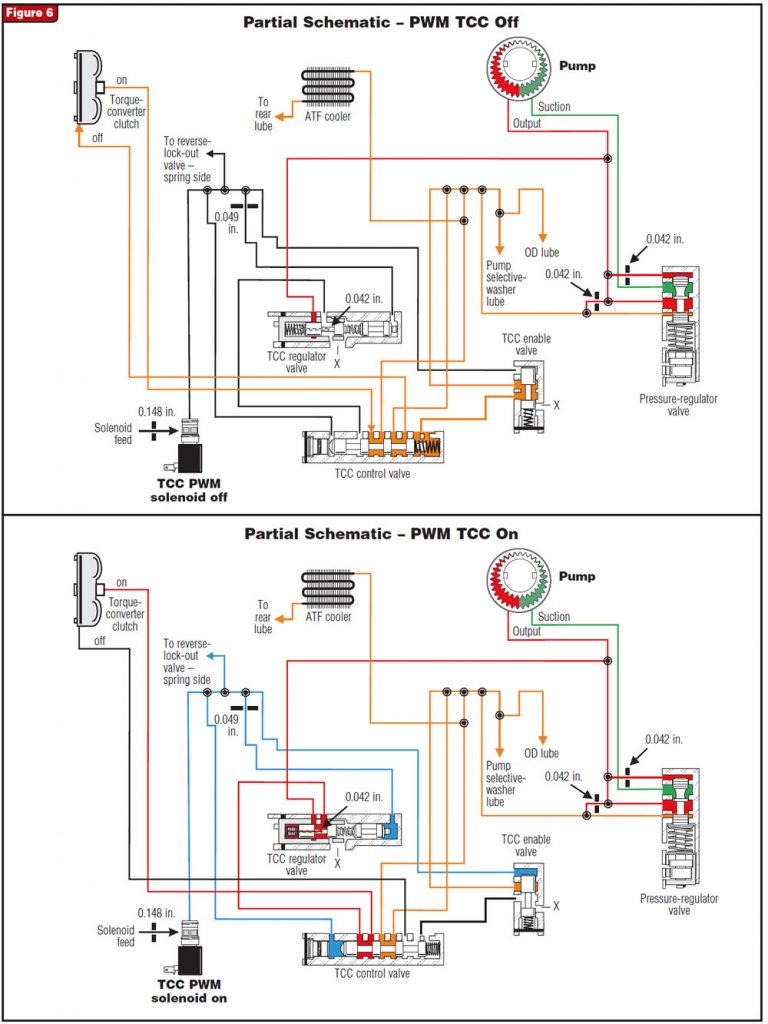
So in addition to codes for the TCC and EPC solenoids being produced should the connector of the internal wiring harness be connected incorrectly to the square case connector, the pressure-control-solenoid signal will activate the TCC solenoid and prevent reverse engagement.
Another connector-connection case revealed and solved!














